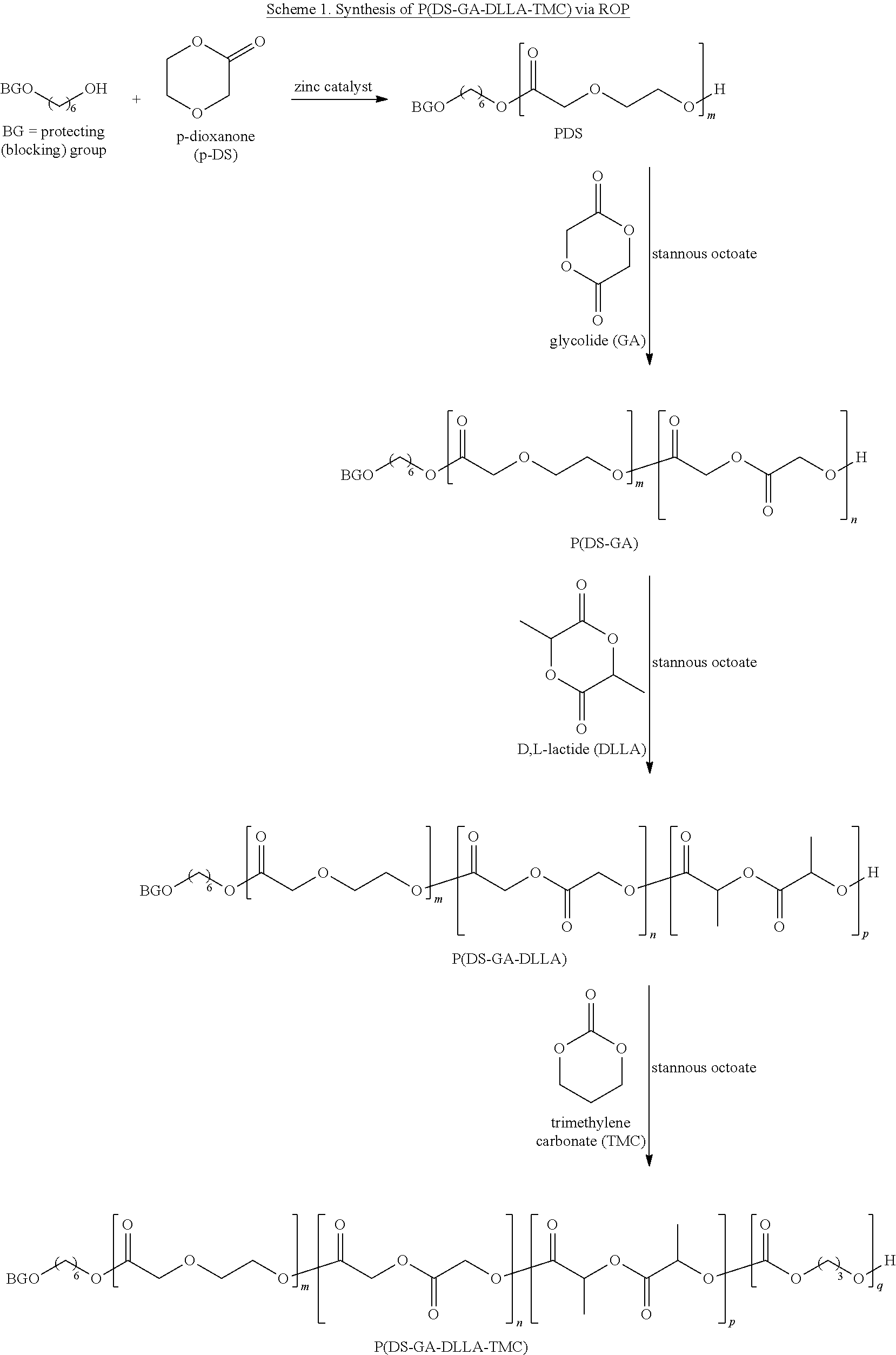Dioxanone-based copolymers for implantable devices
a technology of dioxanone and copolymer, which is applied in the field of dioxanone-based copolymer for implantable devices, can solve the problems of occlusion of conduits, late thrombosis of drug-delivery stents, and collapse of inner flaps or torn arterial linings, so as to avoid adverse effects, improve mechanical properties, and perform the effect of functions
- Summary
- Abstract
- Description
- Claims
- Application Information
AI Technical Summary
Benefits of technology
Problems solved by technology
Method used
Image
Examples
examples
[0212]The examples set forth below are shown for the sole purpose of further illustrating embodiments of the present invention and are in no way meant to limit the invention. The following prophetic examples are given to aid in understanding the invention, but it is to be understood that the invention is not limited to the particular materials or procedures of the examples.
[0213]Synthesis of Dioxananone-Based Copolymers
[0214]The biodegradable, dioxananone-based copolymer of the invention can be prepared by any method of polymerization known in the art. Methods of polymerization include, but are not limited to, solution-based polymerization and melt-phase polymerization. In solution-based polymerization, all the reactive components involved in the polymerization reaction are partially or completely dissolved in a solvent.
[0215]The copolymer of the invention can be synthesized by standard methods known to those having ordinary skill in the art, e.g., by ring-opening polymerization (RO...
PUM
| Property | Measurement | Unit |
|---|---|---|
| Tg | aaaaa | aaaaa |
| Mn | aaaaa | aaaaa |
| Mn | aaaaa | aaaaa |
Abstract
Description
Claims
Application Information
 Login to View More
Login to View More - R&D
- Intellectual Property
- Life Sciences
- Materials
- Tech Scout
- Unparalleled Data Quality
- Higher Quality Content
- 60% Fewer Hallucinations
Browse by: Latest US Patents, China's latest patents, Technical Efficacy Thesaurus, Application Domain, Technology Topic, Popular Technical Reports.
© 2025 PatSnap. All rights reserved.Legal|Privacy policy|Modern Slavery Act Transparency Statement|Sitemap|About US| Contact US: help@patsnap.com

